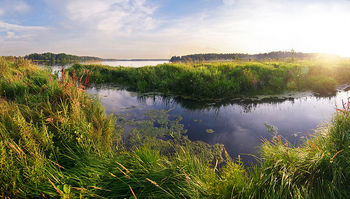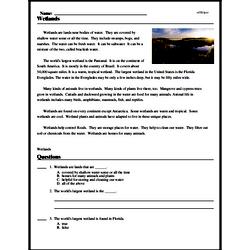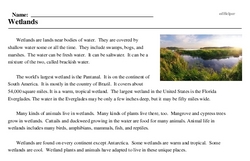Wetlands
Wetlands are lands near bodies of water. They are covered by shallow water some or all the time. They include swamps, bogs, and marshes. The water can be fresh water. It can be saltwater. It can be a mixture of the two, called brackish water.
The world's largest wetland is the Pantanal. It is on the continent of South America. It is mostly in the country of Brazil. It covers about 54,000 square miles. It is a warm, tropical wetland. The largest wetland in the United States is the Florida Everglades. The water in the Everglades may be only a few inches deep, but it may be fifty miles wide.
Many kinds of animals live in wetlands. Many kinds of plants live there, too. Mangrove and cypress trees grow in wetlands. Cattails and duckweed growing in the water are food for many animals. Animal life in wetlands includes many birds, amphibians, mammals, fish, and reptiles.




